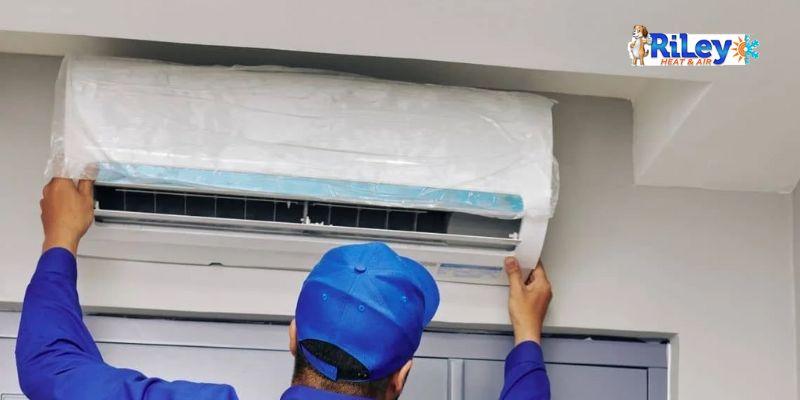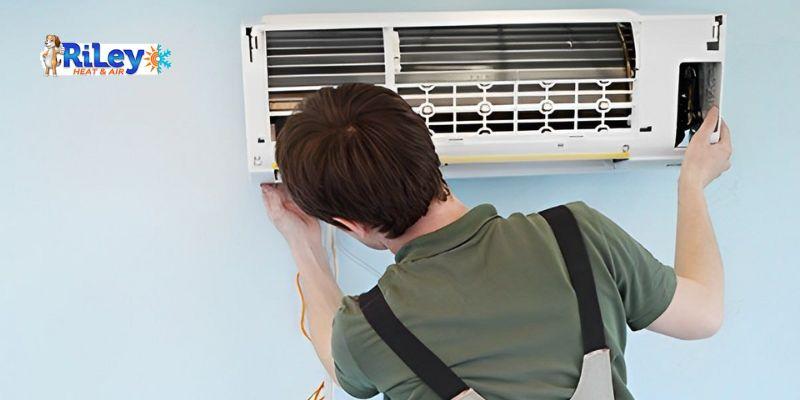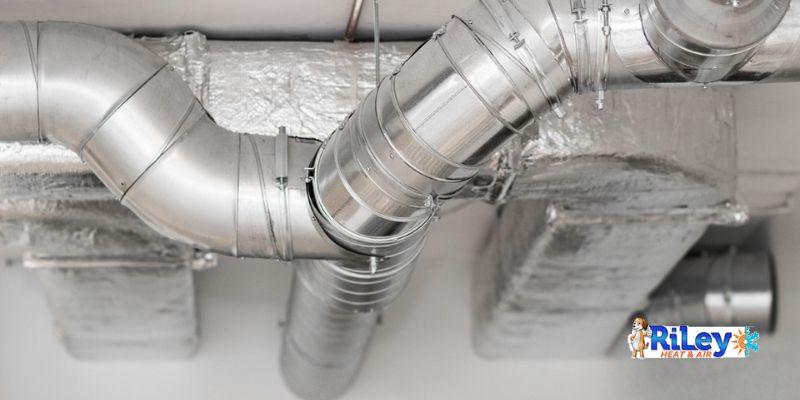
Expert Tips: 5 Rules to Follow for Efficient AC Installation
In the sweltering summer heat, installing an air conditioning (AC) system is a pivotal decision that significantly influences its long-term efficiency and performance. As temperatures rise, the reliance on a well-functioning AC becomes paramount, making the installation process a critical juncture for optimal functionality. Adhering to expert guidelines can make all the difference, whether embarking on a new installation or replacing an existing unit.
This article explores five essential rules curated by HVAC professionals to ensure the efficient installation of your AC system. From selecting the suitable capacity and strategic unit placement to sealing ductwork, prioritizing maintenance, and investing in energy-efficient models, these rules serve as a comprehensive guide to enhance the effectiveness of your cooling solution.
5 Rules to Follow for Efficient Air Conditioning Installation
1. Size Matters: Choose the Right Capacity

Selecting the correct capacity for your air conditioning (AC) unit is a pivotal first step in ensuring optimal performance and energy efficiency. The size of your AC unit is not just about its physical dimensions but, more importantly, about its cooling capacity, measured in British Thermal Units (BTUs). Installing an undersized unit will lead to inadequate cooling, causing the system to overwork, resulting in higher energy consumption and premature wear and tear. Conversely, an oversized unit may cool the space too quickly, leading to frequent on-off cycles, reducing overall efficiency, and potentially causing temperature inconsistencies.
To determine the ideal capacity, it is crucial to conduct a comprehensive load calculation. This calculation considers various factors, such as the square footage of the space, insulation levels, the local climate, and the number of occupants. Consulting with a professional HVAC technician can help ensure an accurate assessment. The goal is to match the cooling capacity of the AC unit precisely to the specific needs of the space, promoting energy efficiency, consistent comfort, and an extended lifespan for the equipment. Choosing the right-sized AC unit is the cornerstone of an efficient installation, setting the stage for optimal performance throughout its operational life.
2. Location, Location, Location—Optimal Placement Is Key
Once you have determined the right-sized air conditioning (AC) unit, strategic placement is the critical rule for efficient installation. Where you position the AC unit can significantly impact its performance, energy consumption, and overall longevity. Avoid installing the unit in direct sunlight or near heat-emitting appliances, as exposure to excess heat can force the system to work harder to maintain the desired temperature. This diminishes energy efficiency and places undue stress on the components, potentially leading to premature wear.
Furthermore, consider the outdoor condenser unit's placement, ensuring it resides in a shaded area whenever possible. Adequate shade helps the unit expel heat more efficiently, allowing the system to cool your space more easily. Equally important is providing sufficient clearance around the condenser unit—aim for at least two feet on all sides. This prevents airflow obstruction, which is crucial for the heat exchange process. By adhering to these guidelines, you not only optimize the efficiency of your AC system but also contribute to its longevity, as a well-placed unit operates under less strain, ensuring reliable cooling performance over the long term.
3. Seal the Deal: Airtight Ductwork Is Essential

Beyond selecting the right-sized AC unit and strategic placement, the efficiency of your air conditioning system hinges on the integrity of its ductwork. Airtight ducts ensure the cooled air reaches its destination without unnecessary losses, optimizing the system's overall performance. Leaky or poorly insulated ducts can result in significant energy waste as conditioned air escapes before reaching the intended spaces.
Conducting a thorough inspection of your ductwork or enlisting the expertise of a professional HVAC technician is crucial. Identifying and addressing any leaks or insulation issues should be a priority, as this enhances efficiency and contributes to better indoor air quality. Well-sealed ducts maintain the desired temperature more effectively, reducing the workload on the AC unit and, consequently, lowering energy consumption.
Investing in proper duct insulation is equally vital, as it prevents temperature losses during air transit. The insulation ensures that the cooled air remains at the desired temperature until it reaches its destination. This comprehensive approach to ductwork integrity not only boosts the efficiency of your AC system but also plays a significant role in energy conservation, translating to lower utility bills and a more environmentally conscious cooling solution.
4. Mind the Maintenance: Regular Servicing Is a Must
Efficient air conditioning (AC) installation is not a one-and-done affair; it requires a commitment to regular maintenance to ensure sustained peak performance. Neglecting routine servicing can lead to decreased efficiency, increased energy consumption, and potential system failures. Regular maintenance tasks a qualified HVAC technician performs include cleaning or replacing air filters, inspecting and cleaning coils, and checking refrigerant levels.
Air filters, in particular, play a crucial role in maintaining efficiency. Over time, filters accumulate dirt and debris, hindering airflow and forcing the system to work harder. Regular cleaning or replacement ensures that the AC unit operates at its intended capacity, promoting energy efficiency and extending the lifespan of the equipment.
Coil maintenance is another vital aspect of the servicing routine. Dirty coils impede heat exchange, reducing the system's overall efficiency. Regular cleaning prevents this buildup, allowing the AC unit to cool the air more effectively.
Checking refrigerant levels is essential for both performance and environmental reasons. An improper refrigerant level can lead to increased energy consumption and potential environmental harm. Regular maintenance ensures that refrigerant levels are optimal, contributing to efficient cooling while minimizing the environmental impact.
5. Invest in Quality: Prioritize Energy-Efficient Systems
Investing in quality pays long-term dividends when it comes to air conditioning (AC) installation. Prioritize energy-efficient AC systems with high Seasonal Energy Efficiency Ratio (SEER) ratings. While these units may have a higher upfront cost, the energy savings and reduced environmental impact make them a wise investment. Many energy-efficient models also qualify for rebates or incentives, enhancing their cost-effectiveness. By choosing a system with advanced energy efficiency, you contribute to environmental sustainability and enjoy lower utility bills and a more economical and reliable cooling solution.
Conclusion
Efficient AC installation is a multi-faceted process that involves careful consideration of factors such as size, location, ductwork, maintenance, and the quality of the unit itself. By adhering to these expert tips, you can ensure that your AC system operates at peak efficiency, providing reliable cooling while minimizing energy consumption. Investing time and effort in the installation process pays off in the long run, offering a comfortable indoor environment and cost savings on energy bills.
COMMENTS
LEAVE A COMMENT







Thank you for sharing these expert tips on efficient AC installation! As someone considering installing or replacing an air conditioning unit, it is incredibly valuable to have access to reliable advice. Understanding the five rules for efficient installation helps ensure optimal performance, saves money on energy bills, and extends the system’s lifespan.